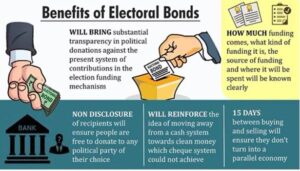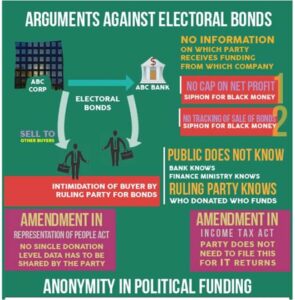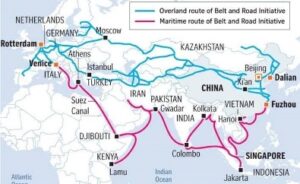31 October 2023 : Daily Current Affair
Daily Current Affairs
31-October-2023
1) Nepal’s Mountains Lose ‘One-Third of Their Ice’: Potential Impact
Topic: GS3- Environment
Context:
- Concerns were raised by UN Secretary-General Antonio Guterres during his recent visit to the area surrounding Mount Everest.
- He disclosed that, mostly as a result of global warming, Nepal’s snow-capped mountains have lost about one-third of their ice in less than 30 years.
- The world’s greatest peaks, including Mount Everest, are experiencing an unprecedented loss of glacial mass, which is a symbol of the severe climatic disaster the planet is currently experiencing.
Accelerated Melting in the Himalayas
- The Earth’s temperature has warmed by 0.74 degrees Celsius on average over the last century, but the Himalayan region of South Asia has seen warming that is significantly more than the world average.
- Of particular concern is the frightening rate at which glaciers are melting in Nepal, which is situated between two of the world’s largest carbon emitters, China and India.
- As noted by Guterres during his visit to the Solukhumbu region, close to Mount Everest, these glaciers have melted 65% faster in the last ten years than in the preceding one.
Hindu-Kush Himalayas at Risk
- The severity of the crisis is further increased by the fact that scientists have warned that the Hindu-Kush Himalaya region may lose up to 75% of its glacier volume due to global warming by the end of the century.
- The 240 million people who live in the mountainous region could face hazardous flooding and water shortages as a result of this worrying prediction.
Mount Everest’s Changing Landscape
- There have been noticeable changes in the environment, according to climbers returning from Everest.
- Once known for its pure, ice features, the mountain is now described as being greyer and dryer.
- This change is a sobering reminder of how much climate change is affecting even the world’s most pristine and remote areas.
Urgent Need for Action
- Guterres called on nations to commit to keeping the rise in global temperature to 1.5 degrees Celsius in order to counteract these worrying trends and lessen the worst effects of climate change.
- If successful, such an endeavour might represent the final chance for the world to prevent the disastrous effects of unregulated global warming and the ensuing environmental changes.
2) Issues in Electoral Bonds case
Topic: GS2- Polity and Governance
Context:
- The Supreme Court’s five-judge bench, will begin hearing arguments on a number of cases that contest the constitutionality of the electoral bonds scheme.
- The bench is chaired by Chief Justice of India (CJI) D Y Chandrachud
Understanding Electoral Bonds
- In his February 1, 2017, budget statement, Arun Jaitley, who was Finance Minister at the time, introduced electoral bonds for the first time.
- These bonds, which resemble promissory notes and are interest-free “bearer instruments,” are available for purchase by Indian nationals and entities that have their corporate headquarters in India.
- These can be purchased at approved State Bank of India branches in a variety of denominations, from Rs 1,000 to Rs 1 crore, and are available for pickup during designated times in January, April, July, and October.
- Donations to political parties registered under Section 29A of The Representation of the People Act, 1951, that received at least 1% of the votes in the most recent general election for a Legislative Assembly or the Lok Sabha, are the only use for electoral bonds.
The Purpose of Electoral Bonds
- With the intention of “cleansing the system of political funding” and establishing “transparency in electoral funding,” the government unveiled the electoral bonds scheme.
- Jaitley sought to address the issue of political parties receiving anonymous cash contributions, a practise that persisted even seventy years after independence.
- The scheme came with a lower cap on anonymous monetary gifts, which was lowered from Rs 20,000 to Rs 2,000.
- Four important laws were updated in order to implement the electoral bonds scheme: the Foreign Contribution (Regulation) Act of 2010, the RPA of 1951, the Income-tax Act of 1961, and the Companies Act of 2013.
Challenges
- The policy was challenged in 2017 by public service NGOs Common Cause and the Association for Democratic Reforms (ADR), who claimed it was introduced as Money Bills (Finance Bills) unlawfully, avoiding the Rajya Sabha.
- Their main complaints were about what they saw as a lack of transparency and their worries that it would allow unrestricted political donations including those from foreign corporations thereby legitimising widespread electoral misconduct.
- In April 2019, the Election Commission of India was instructed by the Supreme Court to provide electoral bond details to political parties that were receiving donations through them.
- This was an interim decision. A three-judge bench that heard the case again in March 2021, however, rejected the petitioner’s arguments on the total anonymity of bond buyers and approved the selling of new bonds ahead of the Assembly elections.


3) 10 years of China’s BRI: taking stock of Xi’s transnational infra project
Topic: GS2-IR
Context:
- China’s ambitious Belt and Road Initiative (BRI) is celebrating its 10th anniversary. This colossal project which started in 2013, aims to reshape global trade and infrastructure development.
What is the Belt and Road Initiative?
- The BRI, represents a multifaceted development strategy aimed at enhancing global connectivity and cooperation.
- It was introduced in 2013 with the goal of creating a network of land and marine routes that would connect Southeast Asia, Central Asia, the Gulf area, Africa, and Europe.
- The project was first named the ‘One Belt, One Road’ but renamed as the BRI to convey a more open and inclusive initiative as opposed to a Chinese-dominated one.
- The Maritime Silk Road and the Silk Road Economic Belt are the two main parts of the project.

Objective:
- The primary goal of the BRI is to boost international connectivity by enhancing infrastructure, trade, and economic cooperation.
- The initiative encompasses a wide range of projects, including railways, ports, highways, and energy infrastructure.
Geographic Corridors:
The land-based Silk Road Economic Belt envisions six key corridors for development:
- China-Pakistan Economic Corridor (CPEC).
- New Eurasian Land Bridge Economic Corridor.
- China-Indochina Peninsula Economic Corridor.
- China-Mongolia-Russia Economic Corridor.
- China-Central Asia-West Asia Economic Corridor.
- China-Myanmar Economic Corridor.
Economic Impact:
- Countries participating in the BRI have witnessed growth in trade and investments with China, leading to preferential treatment and policy benefits.
- Trade with BRI partners registered an annual growth rate of 6.4%, reaching USD 19.1 trillion between 2013 and 2022.
What is India’s Stance on BRI?
- India opposes the project on the grounds of sovereignty and transparency. India has boycotted the BRI summits held by China in 2017, and 2019 and has not endorsed the BRI joint statements issued by the Shanghai Cooperation Organisation (SCO).
- India’s main objection to the BRI is that it includes the China-Pakistan Economic Corridor (CPEC), which passes through the Pakistan-occupied Kashmir (PoK), a territory that India claims as its own.
- India also argues that the BRI projects should respect the international norms, rule of law, and financial sustainability, and should not create debt traps or environmental and social risks for the host countries.
- India has instead promoted other connectivity initiatives, such as the Partnership for Global Infrastructure and Investment (PGII), a G7 initiative to fund infrastructure projects in developing countries.
4) Mideast must consider a two-state solution after the war: Biden
Topic: GS2-IR
Context:
- Speaking of a postwar reality, Israeli Prime Minister Benjamin Netanyahu notes that the three-week-old Israel-Hamas war is about to go into a potentially “long and difficult” new phase.
- In order to bring about the long-desired two-state resolution to the Israel-Palestinian problem, President Biden is pleading with leaders in Israel and the Arab world to seriously contemplate the future.
- According to Biden, the goal should be a two-state solution and he highlights the significance of considering what will happen after the crisis.
What is the Two-State Solution?
- The solution to the Jewish-Arab conflict can be achieved by dividing the land between the Jordan River and the Mediterranean Sea into two separate countries.
- Historically, Jews accepted this idea, while Arabs rejected it. However, there is now support for a two-state solution from the Arab world and Western nations.
- Despite this, Israel now seems hesitant to create a sovereign Palestinian state in the West Bank and Gaza with East Jerusalem as its capital.
Why is Israel now hesitant to create a sovereign Palestinian state/against two nation solution?
Fear of Increased Attack:
- The Israeli-Palestinian conflict involves many stakeholders, but the crucial ones are the Palestinian and Israeli people, with the Israeli public being the key stakeholder.
- Hence, the main question is whether recent Hamas attacks will make Israelis support for a Palestinian state. Some believe this, but others fear that a two-state solution could enable more effective attacks by Palestinians.
Stance of Hamas:
- Hamas doesn’t believe in the idea of an Israel nation making, while, Israel fears that peace may result in a single Palestinian state without Israel.
Radical Israelis Group:
- The challenge lies with Palestinians to convince Israeli voters that they’d live peacefully with Jews if they had their own state. Because, some radical Israelis have always opposed Palestinians having their own state.
What can be the way ahead?
- Palestinians, living under Israeli occupation, have suffered greatly. So, they’ve resorted to causing harm to make Israelis notice their pain. However, this cycle of violence only makes the Israelis less likely to end the occupation.
- Further, Hamas’ recent terror attacks have increased Israeli suspicion, leading them to see a sovereign Palestinian state as a threat to Israel’s existence.
- Hence, to achieve their own state, Palestinians must convince Israelis that they will live peacefully alongside. However, this is a tough challenge.
5) Severe drought in the Amazon reveals millennia-old carvings
Topic: Prelims
Context:
- Due to historically low water levels in the Negro River, a significant tributary that flows through the Brazilian Amazon, ancient engravings that were previously submerged underwater have been found.
- Archaeologists estimate the age of these finely etched engravings on the black rocks along the riverbanks to be between 1,000 and 2,000 years old.
- They feature human faces, animals, and other things.
- The engravings offer important new perspectives on prehistoric populations’ way of life.
Significance of the Petroglyphs
- An archaeologist of Brazil’s National Historic and Artistic Heritage Institute named Jaime de Santana Oliveira emphasised the importance of these petroglyphs, pointing out that they provide a window into the archaic way of life.
- Additionally, rocks that are thought to have been used for stone tool and arrow sharpening may be found at the site.
- The location known as the Ponto das Lajes archaeological site is located near Manaus, the state capital and largest city of Amazonia, in a rural area.
Discovery and Impact of the Drought
- The petroglyphs have been hidden and submerged since they were first discovered in 2010 during another intense drought in the area.
- Hundreds of towns are now isolated as a result of the very low river levels brought on by the current drought in Amazonia, which has transformed once-navigable rivers into enormous sandbanks and mud.
- It has been difficult for public officials to give these folks food and water.
Consequences of the Drought
- Many of the locals, who are small-scale farmers and fisherman, are compelled to walk great distances due to the challenging transportation conditions caused by the low river levels.
- The difficult conditions have been made worse by the high heat and thick smoke that the region, especially Manaus, has been suffering as a result of fires started for pasture clearance and deforestation.
- Many river dolphins at Tefe Lake, close to the Amazon River, have probably perished as a result of the drought.
Reasons for the Drought
- The cyclical weather pattern of the Amazon includes dry spells, which usually last from May to October.
- El Niño, which causes surface waters in the Equatorial Pacific to warm, and the warming of northern tropical Atlantic Ocean waters are the two climate phenomena responsible for this season’s drought, which is more severe than typical.
- The effects of the drought in the Amazon region have become more severe due to these variables.
6. ‘Peak of farm fires has passed in Punjab, Haryana, and U.P.’
Topic: GS3 – air pollution
Steps taken to reduce farm fires:
Reduced Farm Fires:
- The number of stubble-burning incidents has significantly decreased in Punjab, Haryana, and Uttar Pradesh, with a 53% reduction this year compared to the same period in the previous year.
Focused Approach:
- A focused approach to stubble burning was adopted by the Commission for Air Quality Management (CAQM) in NCR and Adjoining Areas, starting in 2021.
Crop Diversification:
- Efforts were made to promote crop diversification and the cultivation of basmati rice, which generates stubble that can be used as cattle fodder.
District-Specific Plans:
- District-specific plans for stubble management were created, with Deputy Commissioners being held accountable.
Stubble Management Machines:
- Farmers received subsidies for procuring stubble management machines, and central assistance for crop residue management has increased in recent years.
Ex Situ Stubble Management:
- Developing an ecosystem for ex situ stubble management remains a challenge, including processing and transporting straw.
- There has been a substantial reduction in farm fires, with the peak having passed, leading to a drop of about 30% in incidents.
Comparison Between Punjab and Haryana:
- Comparing the percentage fall in farm fires between Punjab and Haryana is not a straightforward measure of performance.
Future Plans:
- Ongoing measures for stubble management will continue, with potential for ex-situ management and utilization in power plants and biogas production.
7. Researchers identify a new mushroom species from the Western Ghats
Topic: GS3 – environment and ecology.
Context:
- A new, fragile mushroom with a honey-yellow cap was discovered on the campus of the JNTBGRI in Thiruvananthapuram, highlighting the Western Ghats’ biodiversity.
Additional information on the news:
- Researchers from JNTBGRI identified and described the new mushroom species as Candolleomyces.
- The species is named for the white woolly scale-like structures on its cap and reaches a height of approximately 58 mm.
- Seven species previously classified as Psathyrella in India are now recognized as Candolleomyces.
- The discovery of a new Candolleomyces species in India is significant, as there are only 35 species of this genus worldwide.
8. Easing the transport of cargo by Railways
Topic: GS3 – Railway sector.
Government Policies:
- The Indian government recognizes the need to support the Railways as a cost-effective mode of bulk cargo transportation.
- Two key policies, the PM GatiShakti (PMGS) policy and the National Logistics Policy (NLP), aim to improve infrastructure and logistics in the rail sector.
PM GatiShakti (PMGS):
- PMGS aims to create a seamless multi-modal transport network in India.
- The National Master Plan (NMP) under PMGS employs technology and IT tools for coordinated planning of infrastructure.
National Logistics Policy (NLP):
- NLP focuses on building a national logistics portal and integrating platforms of various ministrie
Challenges for Indian Railways (IR) in Bulk Cargo:
- The IR’s share in bulk cargo transportation is declining.
- Factors such as decentralization of production and diminishing cost advantages contribute to this decline.
Reducing Non-Price Barriers:
- Railway sidings are capital-intensive and high-cost, making them suitable for large industries.
- Common-user facilities at cargo aggregation and dispersal points are needed to reduce logistics costs and encourage more customers to use the IR.
Collaboration with State Governments:
- Collaboration with State governments is crucial to identify cargo aggregation points in mining clusters, industrial clusters, and large cities.
- IR needs to participate in the planning of industrial clusters and mines to increase its share in cargo transportation.
Exploring New Commodities:
- IR must explore new commodities like fly ash for transportation.
- Current restrictions and environmental clearances favor road transportation over rail, and this needs to be addressed.
Addressing Environmental Constraints:
- Environmental considerations are constraining rail loading by the IR.
- Environmental clearances for rail facilities should be mode-agnostic and based on cargo quantity and potential for environmental degradation.
Question: Discuss the challenges faced by the Indian Railways in maintaining its share in bulk cargo transportation. What strategies can be adopted to address these challenges?
9. Maratha quota stir turns violent as NCP office, leaders houses torched.
Topic: GS2 – reservation demands
Context:
- The Maratha reservation agitation in Maharashtra escalated to include arson and vandalism, particularly in Beed district.
- Agitators set fire to the houses and offices of two NCP (Nationalist Congress Party) MLAs, who belonged to rival factions within the party.
Reservation demands by dominant communities in recent times in India:
Introduction:
In recent years, India has witnessed a surge in demands for reservation from dominant communities. These groups argue that they face socio-economic and educational disadvantages and should receive affirmative action benefits. While addressing these grievances is essential, it poses challenges for policymakers in maintaining a delicate balance between social justice and political considerations.
The Patidar Movement:
- The Patidar community in Gujarat, ignited a massive movement demanding Other Backward Class (OBC) status.
- Their primary goal was to gain access to reserved quotas in education and government jobs.
Jat Agitation:
- The Jat community, primarily in Haryana and Rajasthan, demanded OBC status, triggering widespread protests and violence.
- Their claim to OBC reservation was rooted in perceived socio-economic backwardness.
The Maratha Quota Stir:
- In Maharashtra, the Maratha community initiated protests, demanding reservation due to socio-economic disadvantages.
- These demonstrations led to debates about the application of reservation policies for dominant communities.
Gujjar Community’s Ongoing Struggle:
- The Gujjar community in Rajasthan has long-standing demands for Scheduled Tribe (ST) status.
- Their aim is to access the reservation benefits available to ST communities.
Why are dominant communities demanding reservations?
- Economic backwardness:Dominant communities argue that they are also facing economic backwardness and therefore deserve reservations. They point to the fact that many members of their communities are living in poverty and lack access to education and employment opportunities.
- Social backwardness:Dominant communities also argue that they are facing social backwardness. They point to the fact that they are often discriminated against by other communities and that they lack access to basic amenities and services.
- Historical injustice: Some dominant communities argue that they have faced historical injustice and therefore deserve reservations. They point to the fact that they were marginalized and oppressed during the caste system and that they have not been able to fully benefit from the fruits of independence.
Critique of dominant community reservation demands:
- Dominant communities are not backward:Dominant communities are already privileged in Indian society and do not face the same level of economic, social, or educational backwardness as SCs, STs, and OBCs.
- Reservations are meant for marginalized groups:Reservations are a policy tool that is meant to empower marginalized groups and address the historical injustice that they have faced. Dominant communities do not fit into this criteria.
- Reservation demands will dilute the existing reservation system:If reservations are extended to dominant communities, it will reduce the share of reservations for SCs, STs, and OBCs. This will undermine the purpose of reservations and harm the very groups that they are meant to help.
Conclusion:
While acknowledging the concerns of dominant communities, it is crucial for the government to address their grievances within the existing reservation framework. Striking a balance that ensures equity and fairness for all communities remains a significant challenge in India’s evolving social and political landscape.
Question: Critically examine the recent demands for reservations by dominant communities in India. Discuss the impact of these demands on the existing reservation system and social justice.
For Enquiry

31 October 2023 : Daily Current Affair

30 Oct 2023 : Daily Quiz

30 Oct 2023 : Daily Answer Writing

30 Oct 2023 : Indian Express

30 Oct 2023 : PIB

30 October 2023 : Daily Current Affair

30 October 2023 : The Hindu Editorial Notes PDF

28 Oct 2023 : Daily Quiz

28 Oct 2023 : Daily Answer Writing

28 Oct 2023 : Indian Express
Daily Current Affairs 31 October 2023 : Daily Current Affair Daily Current Affairs
31-October-2023
1) Nepal’s Mountains Lose ‘One-Third of Their Ice’: Potential…
Daily Quiz 30 Oct 2023 : Daily Quiz 30 Oct 2023 : Daily Quiz…
mains answer writing 30 Oct 2023 : Daily Answer Writing Mains Answer Writing
30-october-2023
1. In what situations may the President of India declare a Financial…
Indian Express 30 Oct 2023 : Indian Express Indian Express
30-October-2023
1) Restrictive Export Policies Impacting Agriculture
Context:
Restrictive…
October 2023 PIB 30 Oct 2023 : PIB PRESS INFORMATION BUREAU
30-Oct -2023
1. Indian Army and Air Force Contingent Departs for India-Kazakhstan…
Daily Current Affairs 30 October 2023 : Daily Current Affair Daily Current Affairs
30-October-2023
1. 8 feared dead, 32 injured in train accident in A.P.
Topic:…
October 2023 The Hindu 30 October 2023 : The Hindu Editorial Notes PDF The Hindu Editorial
30-October-2023
1. Give up impropriety, demonstrate impartiality.
Topic: GS2 –…
Daily Quiz 28 Oct 2023 : Daily Quiz 28 Oct 2023 : Daily Quiz…
mains answer writing 28 Oct 2023 : Daily Answer Writing Mains Answer Writing
28-october-2023
1. Discuss the key function of the Public Accounts Committee (PAC)….
Indian Express 28 Oct 2023 : Indian Express Indian Express
28-October-2023
1) Rising Concerns of Political Deep Fakes
Context:
The problem of…



